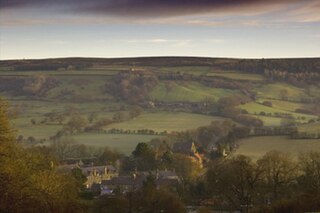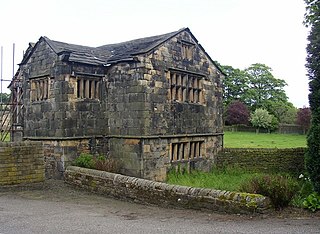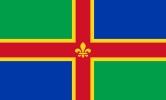Related Research Articles

Arthington Priory was an English monastery which was home to a community of nuns in Arthington, West Yorkshire, founded in the mid-12th century. The priory land is occupied by a residence called "Arthington Hall", which was built around 1585, and little, if anything, remains of the priory. The site of the priory church is possibly now occupied by a farmhouse called The Nunnery. The community was the only one of nuns of the Cluniac congregation in Yorkshire and one of two in England. It was established through a grant by Peter de Arthington.

Rosedale Abbey is a village in the Ryedale district of North Yorkshire, England. It is approximately 8 miles (13 km) north-west of Pickering, 8 miles south-east of Castleton and within Rosedale, part of the North York Moors National Park.

Carisbrooke Priory was an alien priory, a dependency of Lyre Abbey in Normandy. The priory was situated on rising ground on the outskirts of Carisbrooke close to Newport on the Isle of Wight. This priory was dissolved in around 1415.
Nunburnholme Priory was a priory of Benedictine nuns in the East Riding of Yorkshire, England. It was founded during the reign of Henry II of England by an ancestor of Robert de Merlay, lord of Morpeth. Except for its demesne, it possessed only little property in its surroundings. In 1313 the prioress claimed the monastery of Seton in Coupland as a cell of Nunburnholme. In 1521 only five nuns and the prioress lived here, and on 11 August 1536 the house was suppressed. It was valued as the poorest and smallest of the Benedictine nunneries in Yorkshire surviving until then.

Swine Priory was a priory in the village of Swine in the East Riding of Yorkshire, England. The site of the Cistercian nunnery is a Scheduled Monument.

Bullington Priory was a priory in Bullington, Lincolnshire, England.
Cammeringham Priory was a priory in Cammeringham, Lincolnshire, England.
Gokewell Priory was a Cistercian Catholic priory in Broughton, Lincolnshire, England..
Great Limber Preceptory, Limber Magna was a Camera (farm) of the Knights Templar and later the Knights Hospitaller in the village of Great Limber, Lincolnshire, England.
Greenfield Priory was a Cistercian priory in Greenfield, near Aby, Lincolnshire, England.

Nocton Park Priory was an Augustinian priory in Nocton, Lincolnshire, England.

North Ormsby Priory was a Gilbertine priory in North Ormsby, Lincolnshire, England.

Nuncotham Priory was a priory of Cistercian nuns in Brocklesby, Lincolnshire, England.
Stixwould Priory was a priory in Lincolnshire, England, a Cistercian nunnery founded by Lucy, countess of Chester, in 1135. The Mappa Mundi describes it as Gilbertine, but modern authors regard it as Premonstratensian. Originally suppressed in 1536, Benedictine nuns from Stainfield were then moved in by the King. In 1537 the nunnery was refounded for Premonstratensian canonesses, before being finally suppressed in 1539.

Handale Priory was a priory of Cistercian nuns in Handale, North Yorkshire, England. It was founded in 1133 by William, son of Roger de Percy, and was dissolved in 1539. A fishpond survives and a farmhouse built on the site in the 18th century may incorporate part of the priory.
Keldholme Priory was a Cistercian nunnery in Kirkbymoorside, North Yorkshire, England. It was established by one of the Robert de Stutvilles in either the reign of Henry I or II. Two graves are visible, built into the wall of the modern Priory, a house built on the site of the nunnery. The Priory experienced great upheaval in the early 14th century during a disputed election as to who would be Prioress.

Kirklees Priory was a Cistercian nunnery whose site is in the present-day Kirklees Park, Clifton near Brighouse, Calderdale, West Yorkshire, England. It was originally in the ancient ecclesiastical parish of Dewsbury. The priory dedicated to the Virgin Mary and St James was founded by Reiner le Fleming, Lord of the manor of Wath upon Dearne, in 1155 during the reign of Henry II.
Cookhill Priory was a Cistercian nunnery near Cookhill in Worcestershire, England.
The former Priory of Douglas was a Cistercian monastery of nuns on the Isle of Man, apparently founded in the reign of Rǫgnvaldr Guðrøðarson, King of the Isles.
References
- ↑ "The priory of Heynings". Houses of Cistercian nuns. Victoria County History. Retrieved 4 August 2011.
- ↑ Historic England. "Heynings Priory (891738)". Research records (formerly PastScape). Retrieved 4 August 2011.
Coordinates: 53°21′27″N0°43′47″W / 53.3575°N 0.72963°W

